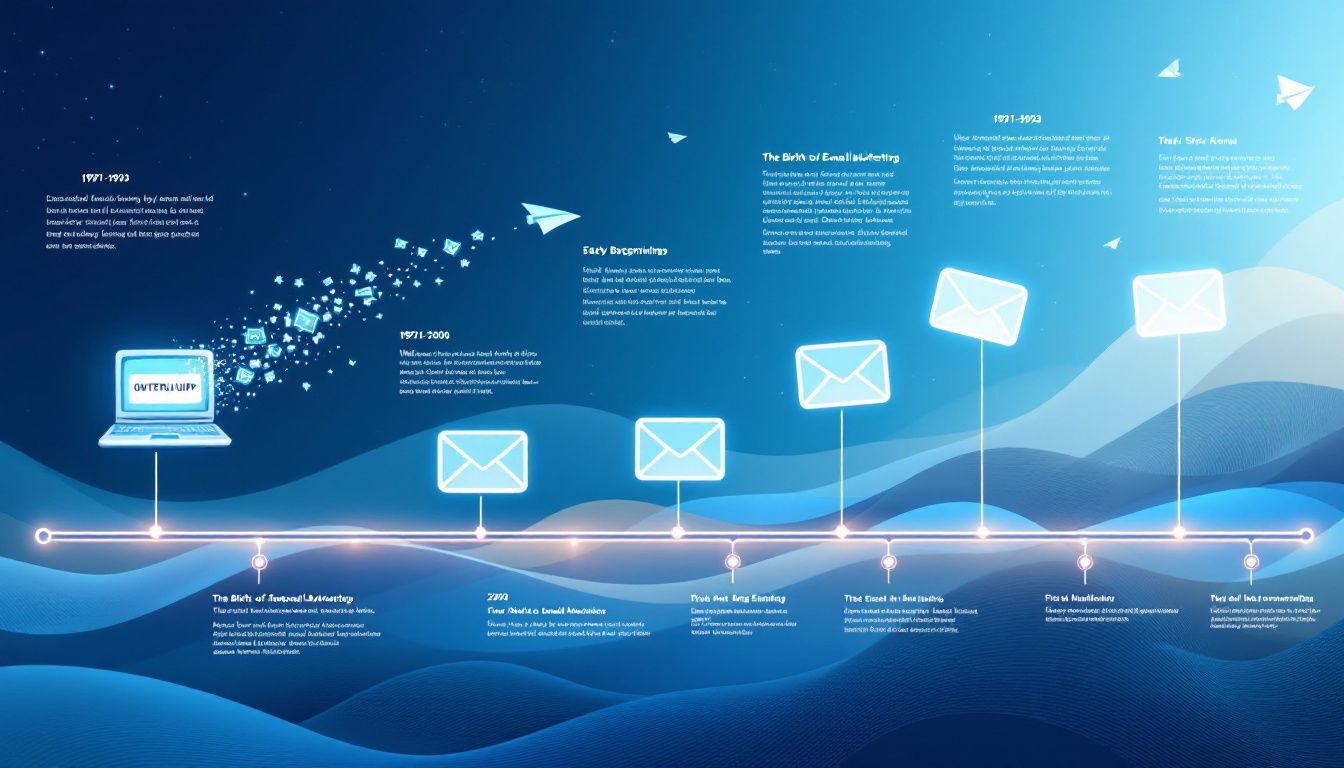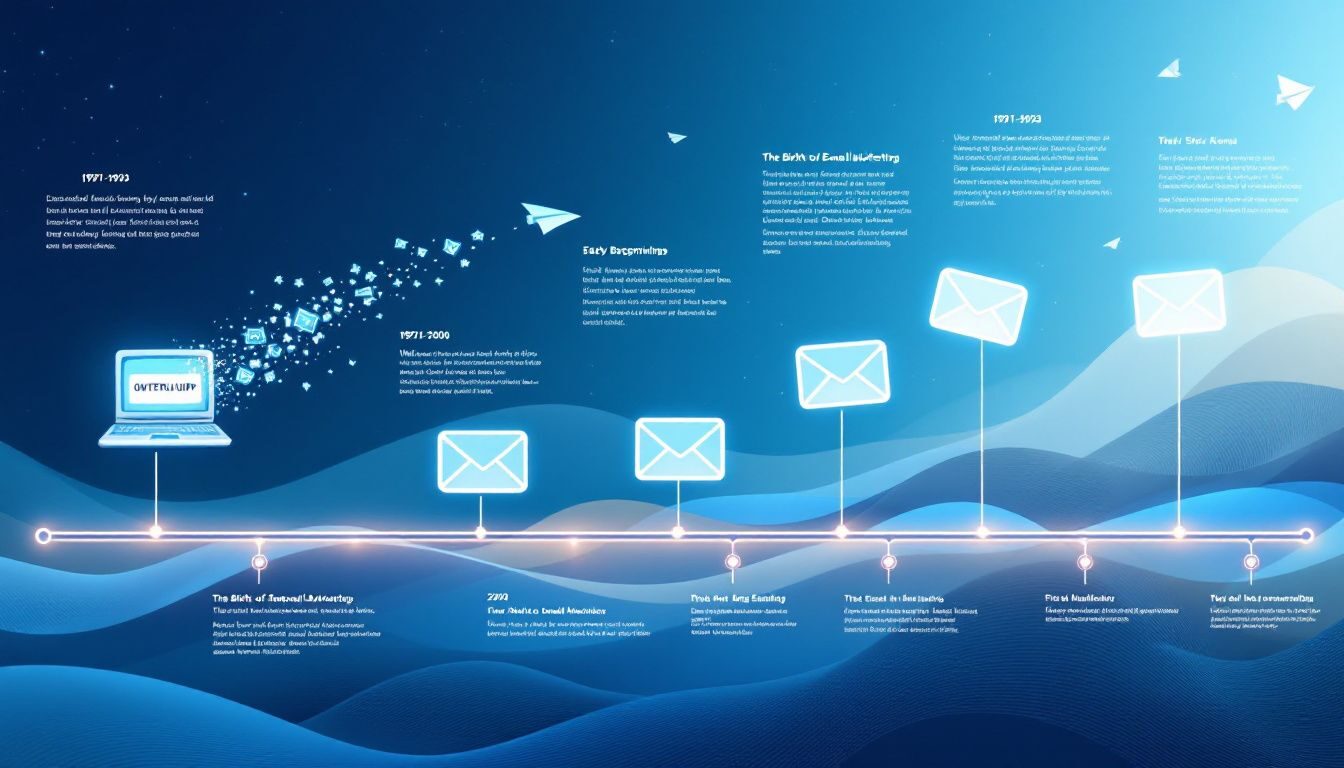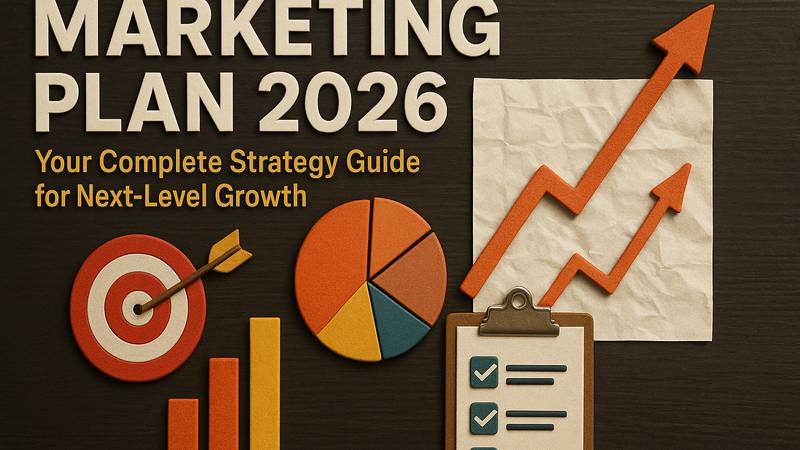
Top Strategies for Successful Email Marketing in 2025
Email marketing is vital for boosting business in 2025. This article highlights the top strategies, from campaign types to email list building and performance tracking, to help you master email marketing and drive significant results.
Key Takeaways
-
Email marketing has evolved significantly, with various types of campaigns such as promotional, transactional, and lifecycle emails serving distinct purposes in driving engagement.
-
Building and maintaining a clean email list is essential for email marketing success, combining the effective importation of contacts with strategies for capturing new subscribers.
-
Effective email campaigns prioritize personalization, engaging subject lines, and valuable content to enhance customer loyalty while also necessitating compliance with regulations to ensure deliverability.
The Evolution of Email Marketing

Email marketing has come a long way since its inception. The journey began in 1978 when Gary Thuerk sent the first mass email, generating approximately $13 million in sales. This marked the beginning of a new era in digital communication. The introduction of the Simple Mail Transfer Protocol (SMTP) in 1980 standardized email transmission, making it more reliable and accessible. In 1983, the launch of the first commercial email service, MCI Mail, expanded email communication for businesses.
The 1990s saw significant advancements with the introduction of Multipurpose Internet Mail Extensions (MIME) in 1991, allowing emails to include images and multimedia content. The launch of Hotmail in 1996 popularized free webmail services, making email accessible to a broader audience.
Over the years, email marketing has evolved into a cornerstone of digital marketing, driven by advancements in technology and changing consumer behavior.
Different Types of Email Campaigns
Email marketing campaigns aim to achieve specific objectives. The primary types include promotional, transactional, and lifecycle emails, each serving a distinct purpose in a comprehensive strategy.
Understanding these different types will help you tailor your campaigns to meet your marketing goals and enhance your email marketing performance.
Promotional Emails
Promotional emails are the lifeblood of many email marketing campaigns. They are designed to drive direct responses by delivering focused marketing messages that encourage action. Whether it’s a marketing offer or a special promotion, the primary purpose of these emails is to generate immediate engagement and sales.
Compelling subject lines and engaging content are vital for successful promotional emails.
Transactional Emails
Transactional emails are triggered by specific actions taken by the recipient and are essential for providing important information. Examples of such messages are dropped basket notifications and password reset emails. Other types include purchase confirmations, order status updates, reorder reminders, and email receipts.
These emails often achieve high open rates, making them a valuable opportunity to include additional commercial messages.
Lifecycle Emails
Lifecycle emails are designed to nurture customer relationships at various stages, from acquisition to retention. These emails are tailored to meet the specific needs and behaviors of customers, making them highly effective for engagement and retention.
Delivering relevant content at the right time with lifecycle emails fosters long-term existing customers loyalty and encourages repeat business.
Building Your Email List
Building a robust email list is the foundation of any successful email marketing campaign. Whether you are starting from scratch or looking to expand your existing list, capturing email addresses directly from potential subscribers is crucial.
The right method for building your list depends on your specific campaign goals. Successful email marketers often follow a two-part formula that includes both importing existing contacts and capturing new subscribers effectively.
Importing Existing Contacts
Importing existing contacts into your email marketing tool is a critical step that requires ensuring proper permissions. Segmentation of your contact list improves the relevance and response rates of your emails, ultimately driving revenue.
Automation, list segmentation, and third-party integrations enhance email personalization and uphold the integrity of your marketing efforts.
Capturing New Subscribers
Capturing new subscribers is essential for growing your email marketing reach. Combining valuable incentives with prominent subscription opportunities, such as opt-in forms, can effectively build your email audience.
Utilizing exit-intent pop-ups, promoting sign-up forms through social media, and A/B testing different designs and messages are proven strategies to increase subscriber numbers.
Crafting Effective Email Marketing Campaigns

Effective email marketing campaigns start with clear goals and a promotional or editorial calendar. Personalization, bite-sized content, and storytelling engage recipients. The inverted pyramid structure grabs attention and boosts click-through rates, making it an essential component of an effective email marketing strategy.
A successful promotional email campaign should be creative, cohesive, and clearly define the offer to customers.
Subject Lines
Subject lines are crucial for improving open rates in email marketing. Action-oriented language significantly boosts engagement. Crafting engaging and relevant subject line ensures that your emails stand out in crowded inboxes, leading to higher open rates and better campaign performance.
Personalization
Personalization is key to engaging recipients effectively. By tailoring emails based on customer data and preferences, you can make your messages more relevant and impactful. Hyper-personalization, which utilizes data to customize emails, significantly improves customer retention and engagement.
Automated emails triggered by specific actions ensure higher relevance and better results.
Visual Elements
Visual elements are essential for making your email content stand out. Visuals are more eye-catching and memorable, resulting in a 65% recall rate compared to just 10% for text-based content. Consistent design elements like colors and fonts help establish a unified brand identity, making your emails easily recognizable.
Incorporating diverse content types, such as videos and infographics, enhances engagement and retention.
Maintaining Clean Lists
Maintaining a clean email list is vital for ensuring the effectiveness of your email marketing campaigns. Regularly reviewing subscriber data for engagement and removing or further segmenting inactive subscribers helps improve overall campaign performance.
Keeping your list clean enhances email deliverability and ensures that your messages reach the right audience.
Measuring Email Marketing Performance

Measuring email marketing performance is essential for understanding the effectiveness of your campaigns. Key metrics to track include open rates, click-through rates, and conversion rates.
Combining email marketing tools with website analytics provides comprehensive tracking and insights, optimizing future campaigns and enhancing performance.
Open Rates and Click-Through Rates
Open rates and click-through rates are critical indicators of email marketing success. Personalized subject lines and A/B tested variations can greatly improve open rates. Tracking these metrics helps you understand how well your emails are engaging subscribers and provides insights for future campaigns.
Conversion Rates
Conversion rates measure how many email recipients take a desired action, such as making a purchase or signing up. Creating a sense of urgency in promotional emails can significantly drive conversions.
Analyzing conversion rates post-email engagement helps gauge the effectiveness of your marketing campaigns and optimize strategies for better results.
Enhancing Customer Loyalty Through Email Marketing
Email marketing plays a crucial role in enhancing customer loyalty by providing personalized content that resonates with individual preferences. Various email campaigns boost customer loyalty and engagement, proving more cost-effective than acquiring new customers.
Incorporating customer feedback and delivering personalized communication fosters strong emotional ties with your brand.
Consistent Branding
Consistent branding in email campaigns is essential for building trust and aligning with other customer interactions. Uniform branding helps establish reliability and recognition among your audience, reinforcing customer loyalty and enhancing their overall perception of your brand.
Valuable Content
Valuable content is key to successful email marketing campaigns. Composing 80% valuable information and 20% promotional content ensures that subscribers find value in the communications they receive. This balanced content strategy enhances recipient engagement, fosters greater trust, and drives customer loyalty.
Summary
Summarize the key points discussed in the blog post. Highlight the importance of understanding the evolution of email marketing, different types of email campaigns, building robust email lists, crafting effective campaigns, ensuring email deliverability, measuring performance, and enhancing customer loyalty. End with an inspiring message encouraging readers to implement these strategies to elevate their email marketing efforts.
Want More Email Marketing Tips?
Looking for more in-depth advice on how to grow your list, plan seasonal campaigns, or automate your post-purchase emails? Check out our latest guides and resources to elevate your email marketing game and keep your subscribers excited year-round!
© 2025, Vertical Response. All rights reserved.



